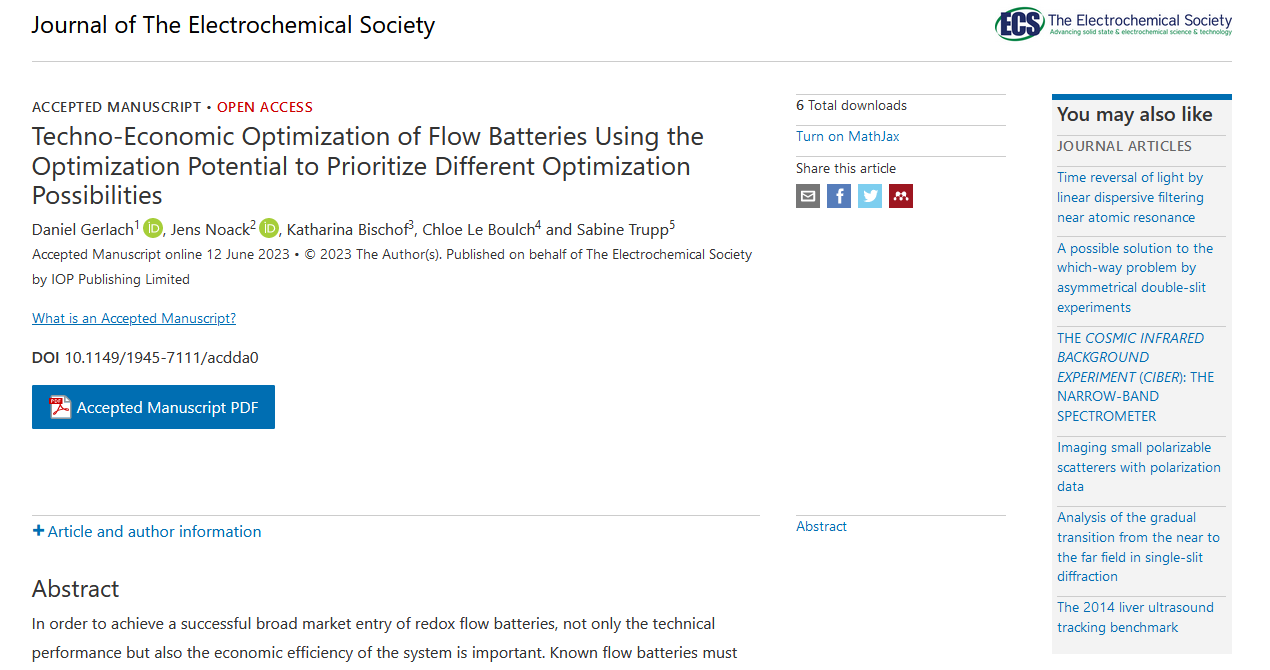In order to achieve a successful broad market entry of redox flow batteries, not only the technical performance but also the economic efficiency of the system is important. Known flow batteries must therefore be optimized techno-economically for specific applications. Not every technically possible improvement has the same positive influence on the economically relevant performance or energy-related specific costs. With the help of an optimization potential as a value, prioritizations of the optimization approaches possible in concrete cases can be obtained. Extensive comparative measurements on redox flow batteries based on vanadium and on methyl viologen and TEMPO served to establish a data basis for all input values for the model presented here. The data came from measurements of laboratory batteries, since only from these real numerical values for the costs could be obtained. The theoretical model developed in this way can be used as a profound basis in other investigations with e.g. industrial batteries in order to be able to carry out goal-oriented optimization and more realistic comparisons.
You can access the whole paper here: https://iopscience.iop.org/article/10.1149/1945-7111/acdda0

